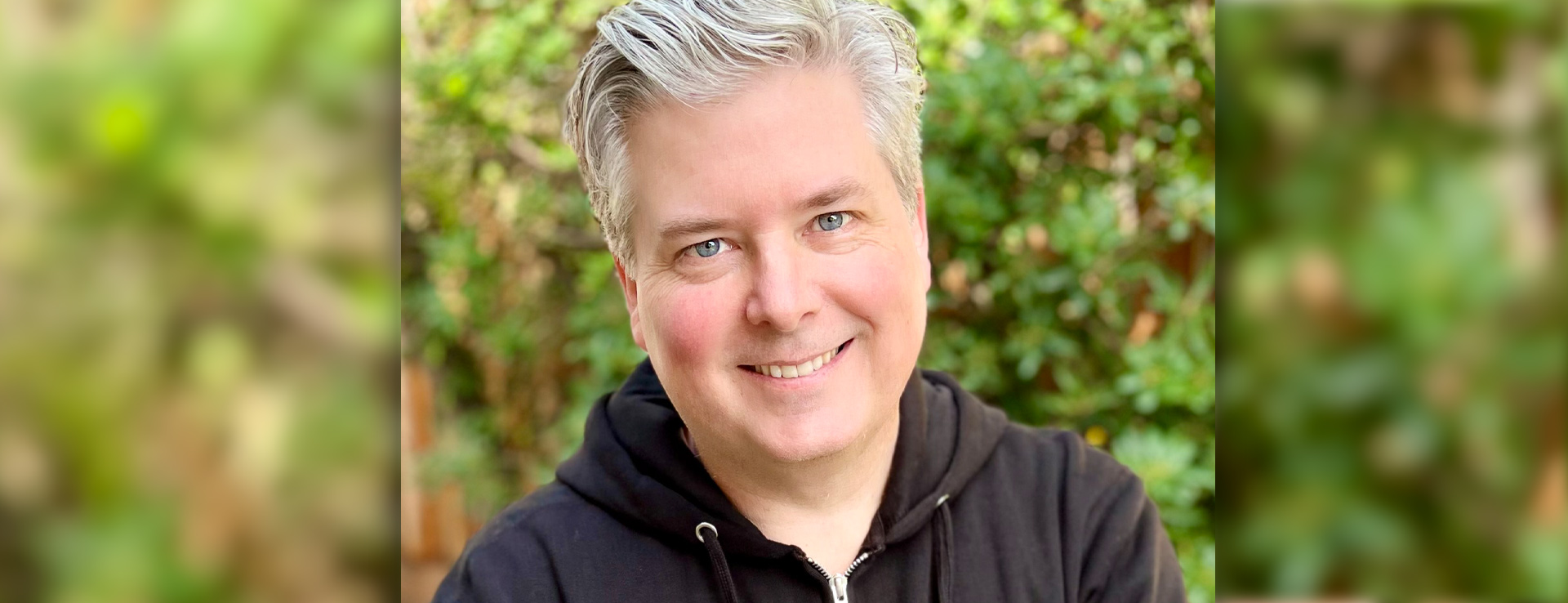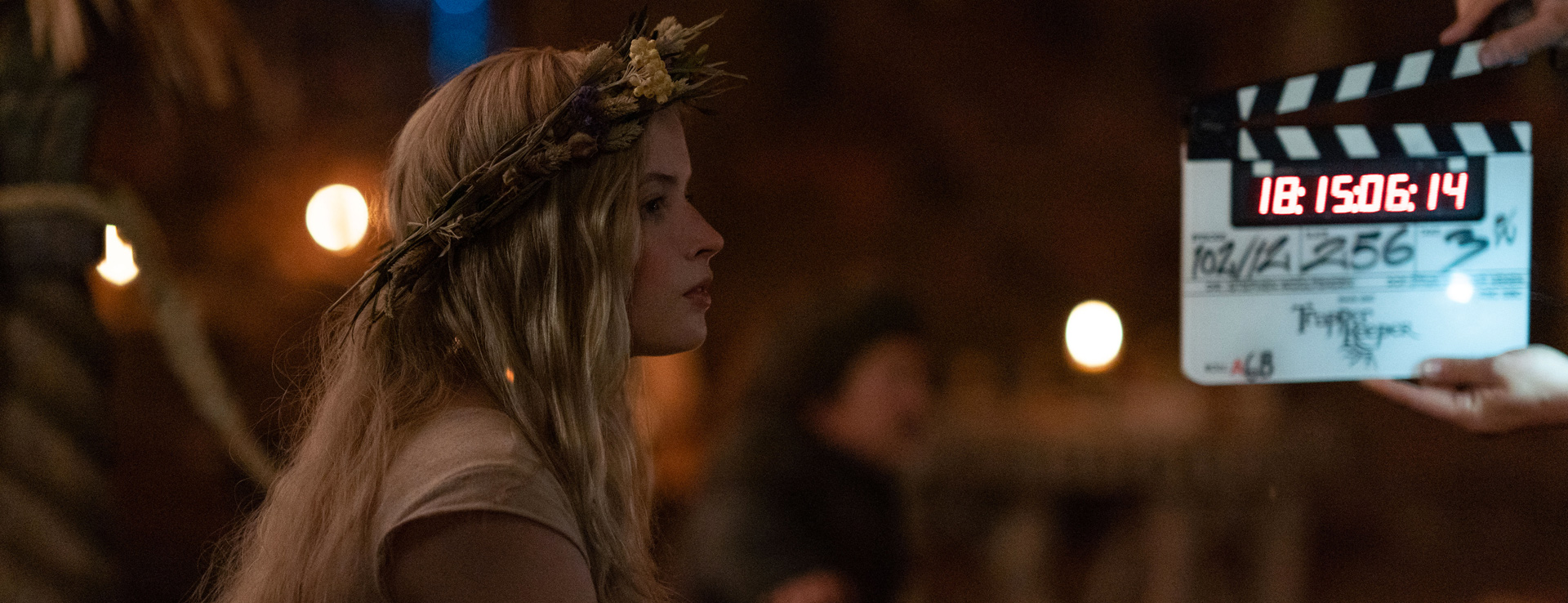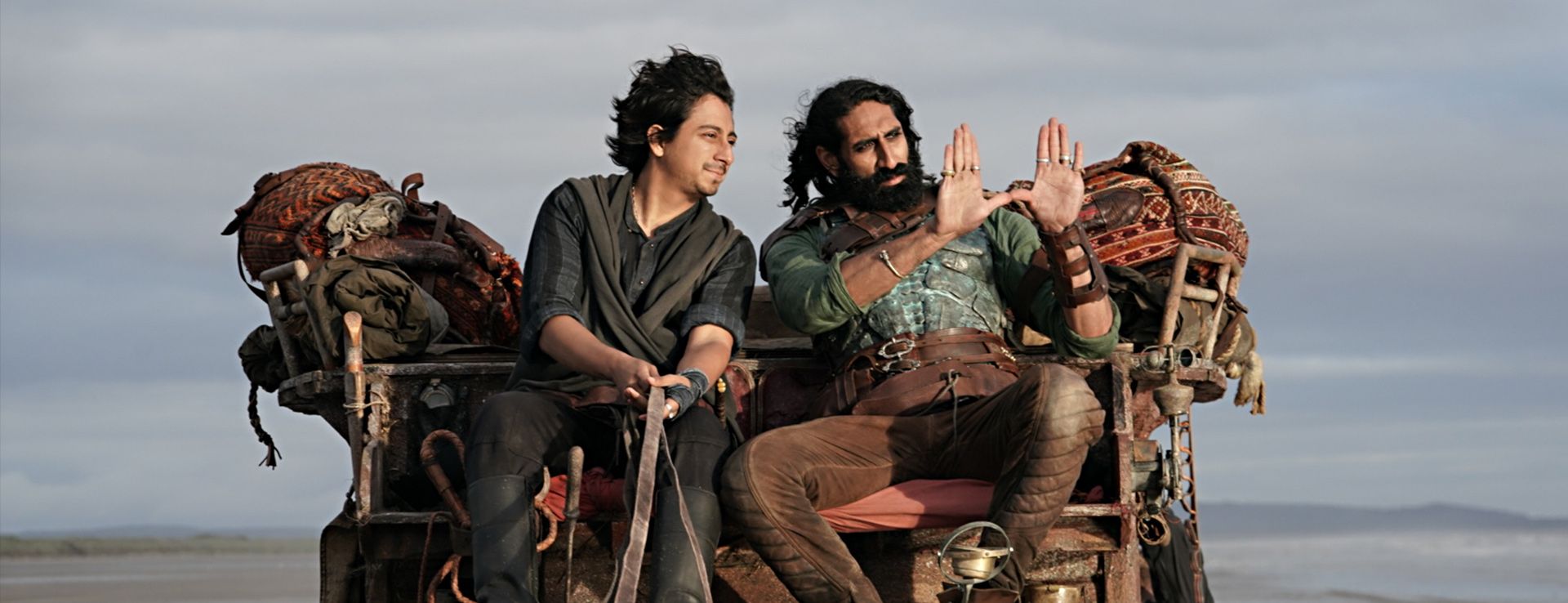“Telling Stories with Sound”: Supervising Sound Editor David W. Collins on Willow
The lifelong Lucasfilm fan made sure he could have a part in making this fantasy adventure.
David W. Collins has worn many hats at Lucasfilm over the years, from voice artist to sound artist for video games to stage host at Star Wars Celebration and his current role at Skywalker Sound. Having worked on many Star Wars projects, his lifelong passion for Lucasfilm found a new outlet in the company’s latest series, Willow, a sequel to the classic theatrical movie.
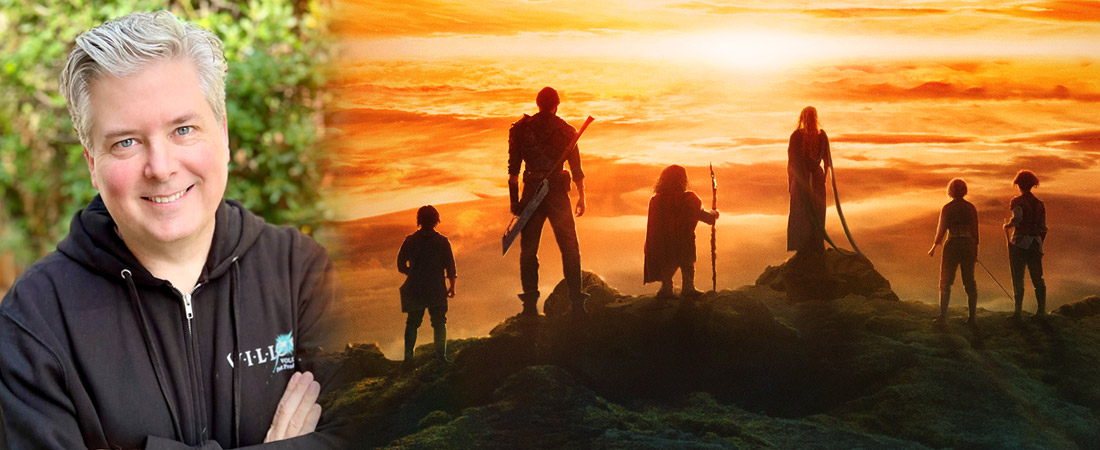
Collins remembers the day in May of 1988 when Willow opened to a packed local theater in Fairfield, California. “It was so packed that I didn’t get a great seat,” he says. “I was in the front and off to the side. But what was great was that I could see the audience and watch everybody laugh and enjoy it.”
Willow was Collins’ major introduction to fantasy filmmaking. “It wasn’t that big of a genre in the ‘80s,” he says, “except for movies like Dragonslayer and Excalibur (by the way, Thraxus Boorman is named for John Boorman who directed Excalibur). My gateway to The Lord of the Rings, The Hobbit, and Harry Potter was Willow.”
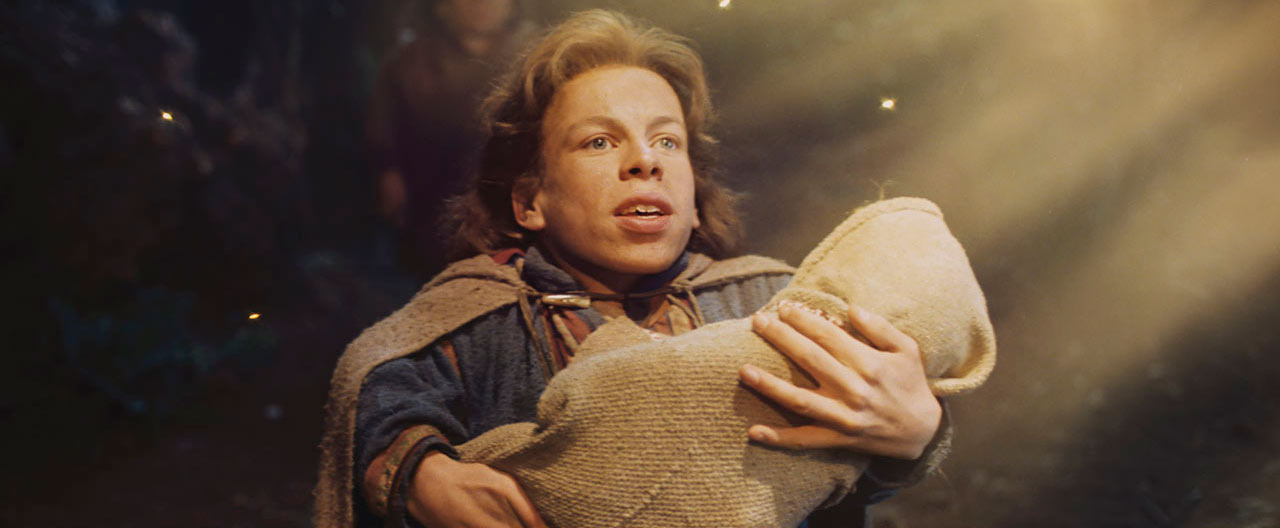
Now a member of Skywalker Sound, when Collins heard rumblings that a Willow series was in development, he asked director of production Jon Null if he might be involved. “Jon was actually a Brownie in the original movie, which I didn’t know,” Collins says. “It turned out that [sound designer] David Farmer had also asked about the series.” Many fantasy fans today know Farmer’s celebrated work as sound designer for The Lord of the Rings and The Hobbit trilogies. It turned out that Willow had been an early inspiration for the artist who would contribute so much to the genre.
With Farmer as sound designer, Collins joined as supervising sound editor, and because of his experience with voice acting, he would be ADR (automated dialogue replacement) supervisor as well. This meant that Collins would get to work closely with the cast and showrunners of the series in addition to the sound team at Skywalker Ranch (which included sound editor Teresa Eckton, who worked on the original movie).
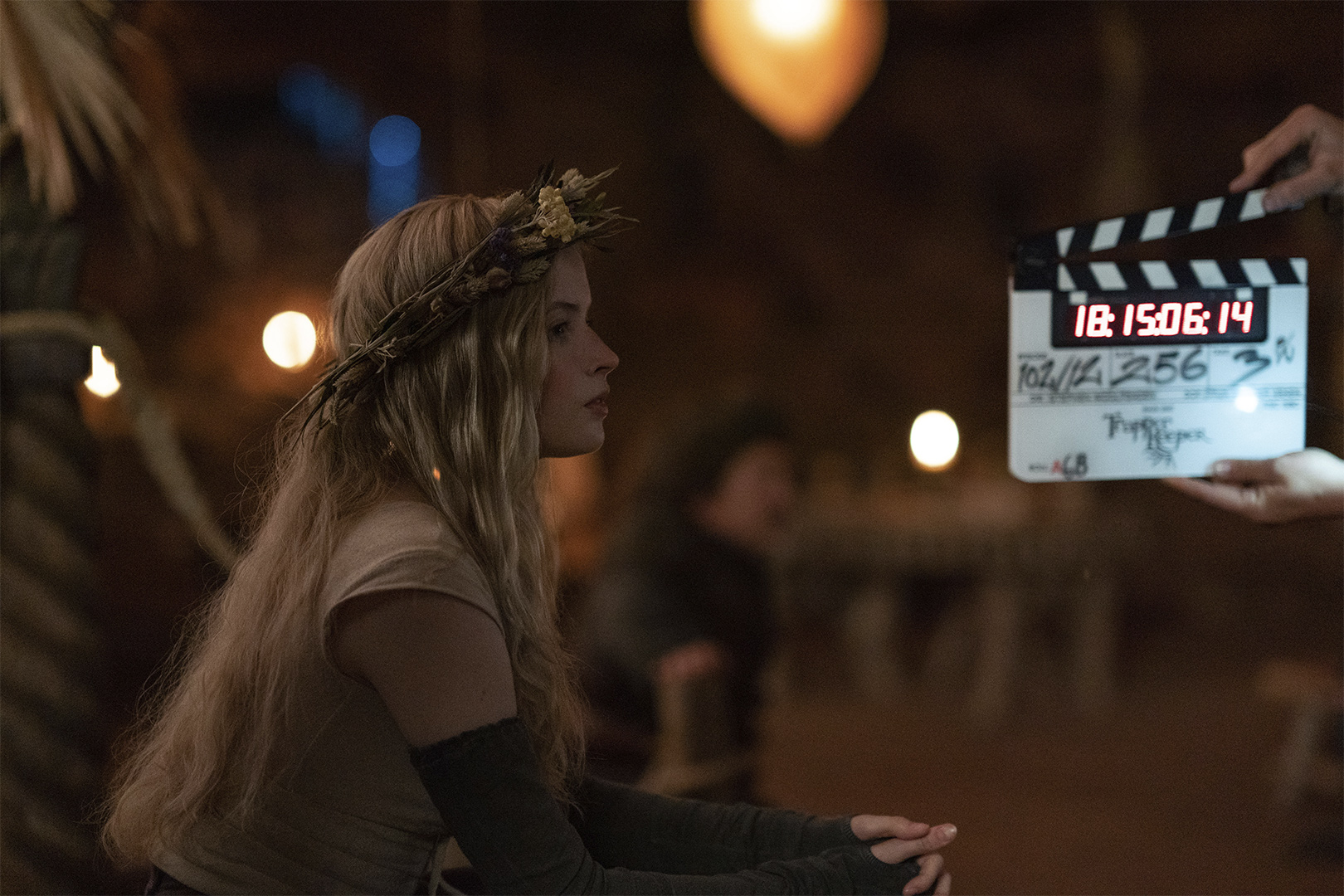
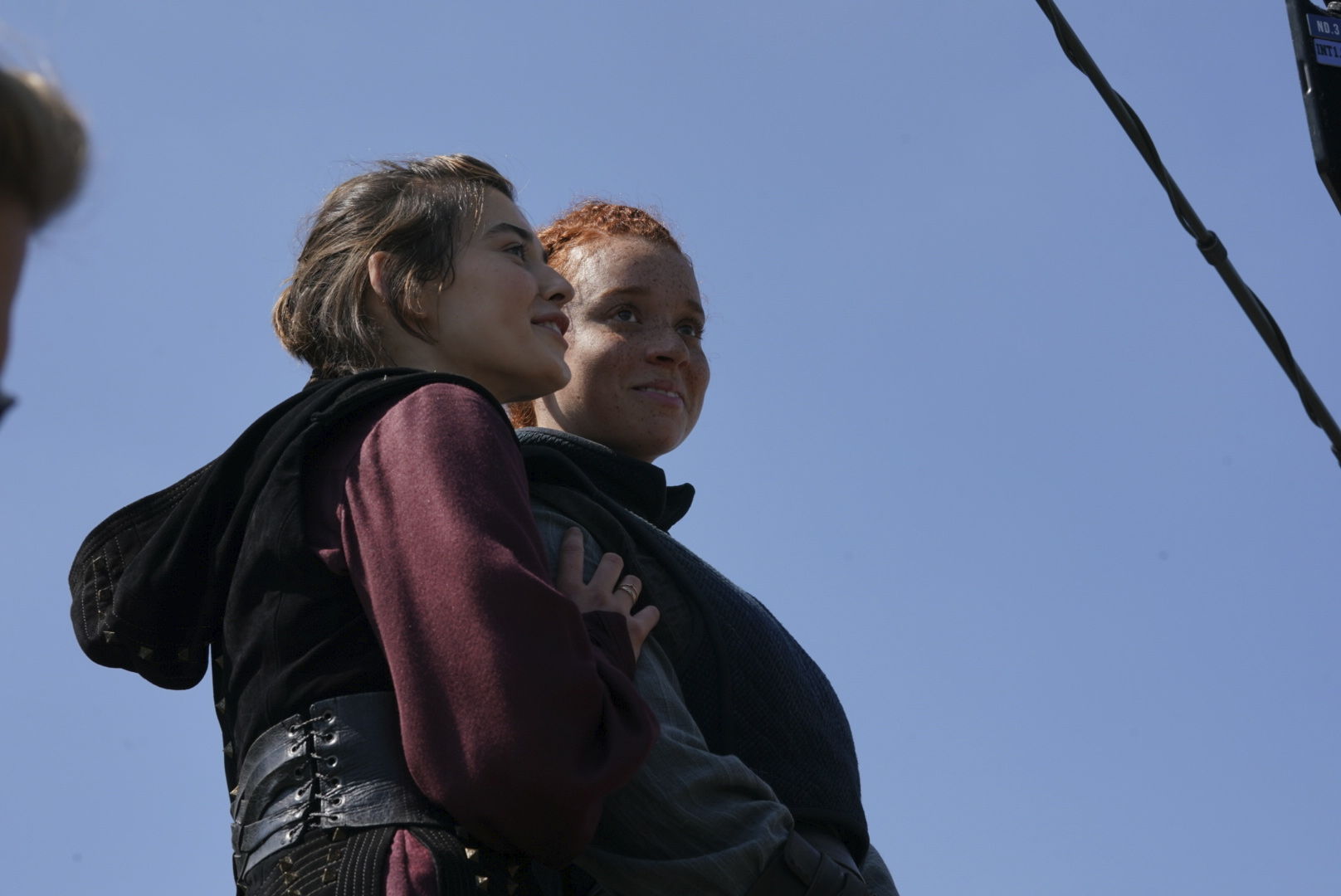
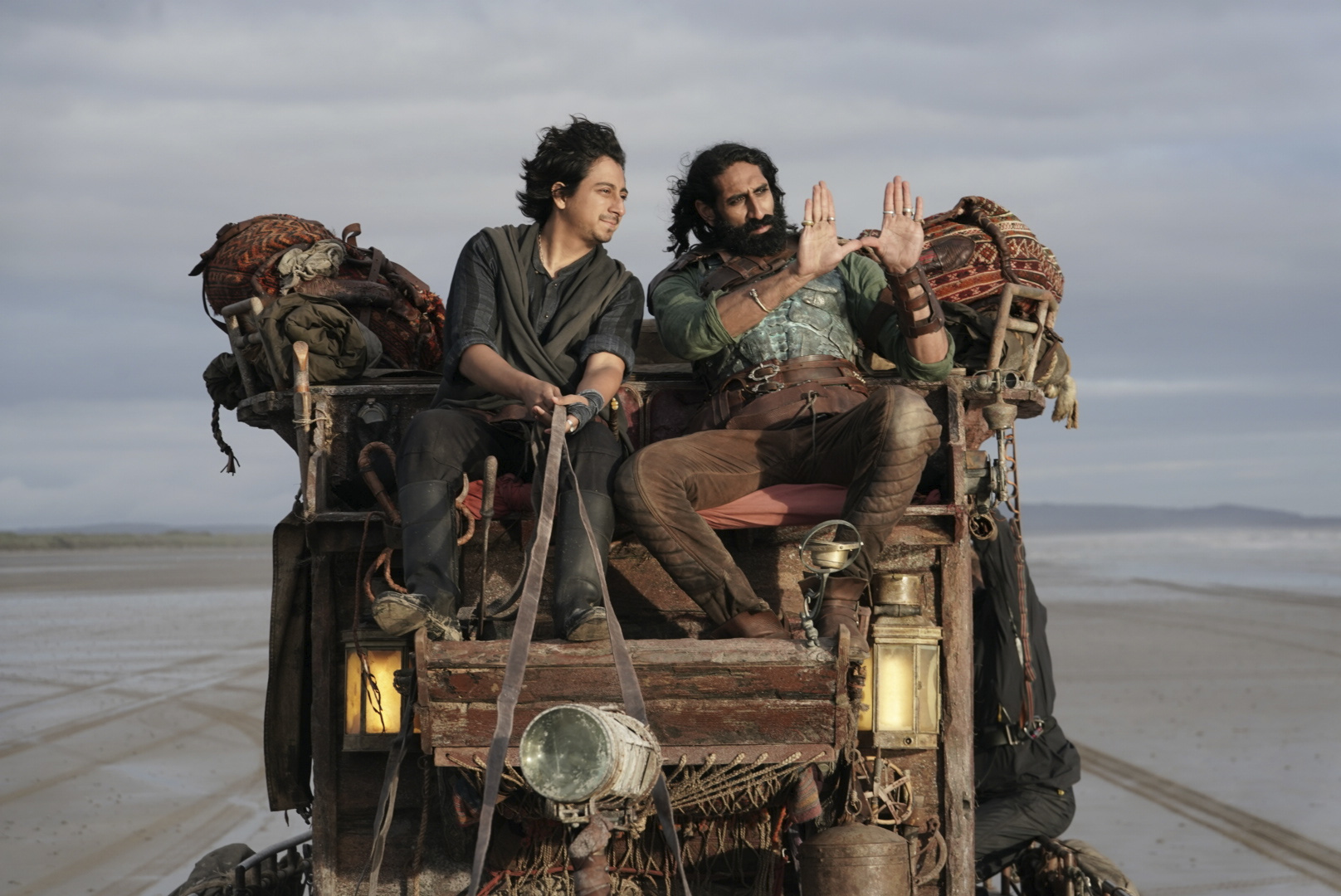
“It was really special to see [showrunner] Jon Kasdan at work,” Collins explains. “The night before a recording session with one of the actors, he’d send me a page of script alternates. Like in Star Wars, the sets of Willow are very noisy with wind machines and horses and armor and things crashing. You have to replace a lot of the dialogue in post-production, and that gives the writers an opportunity to create even more story beats with moments of humor and drama.”

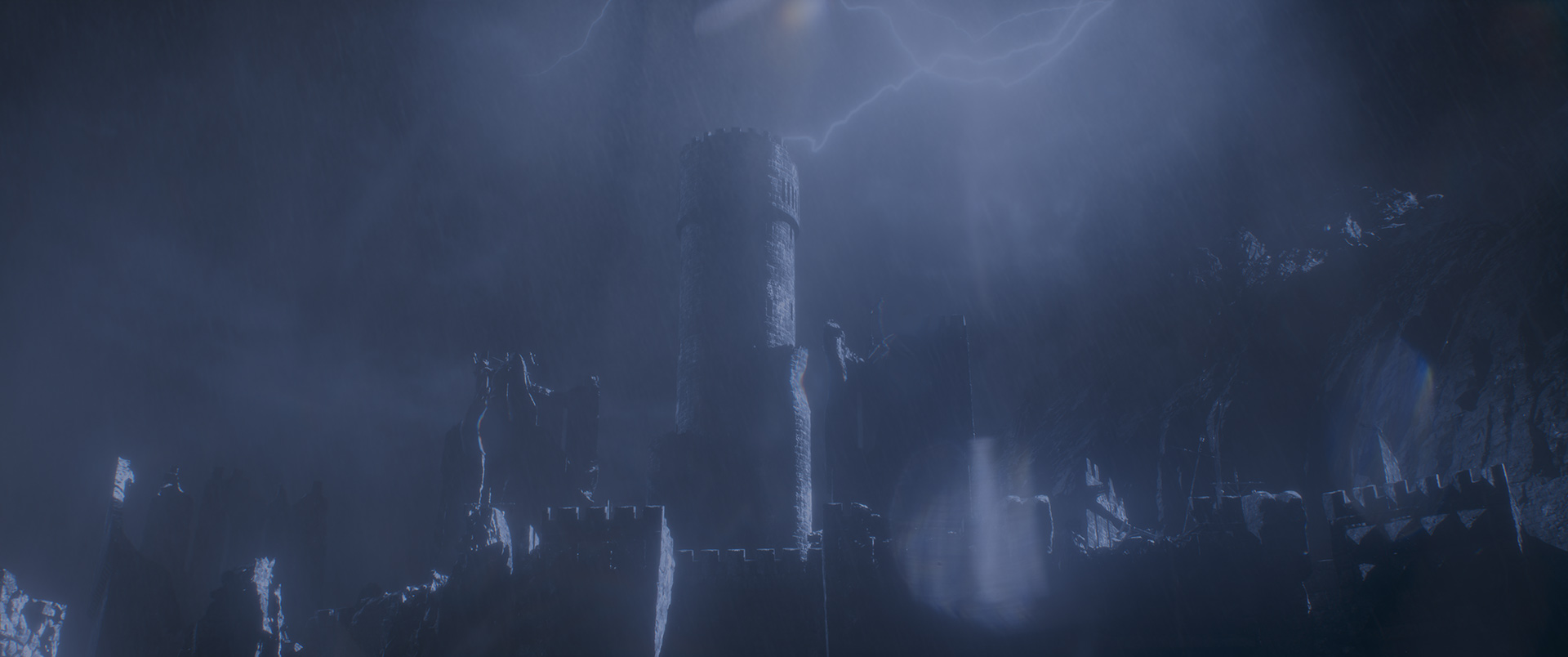
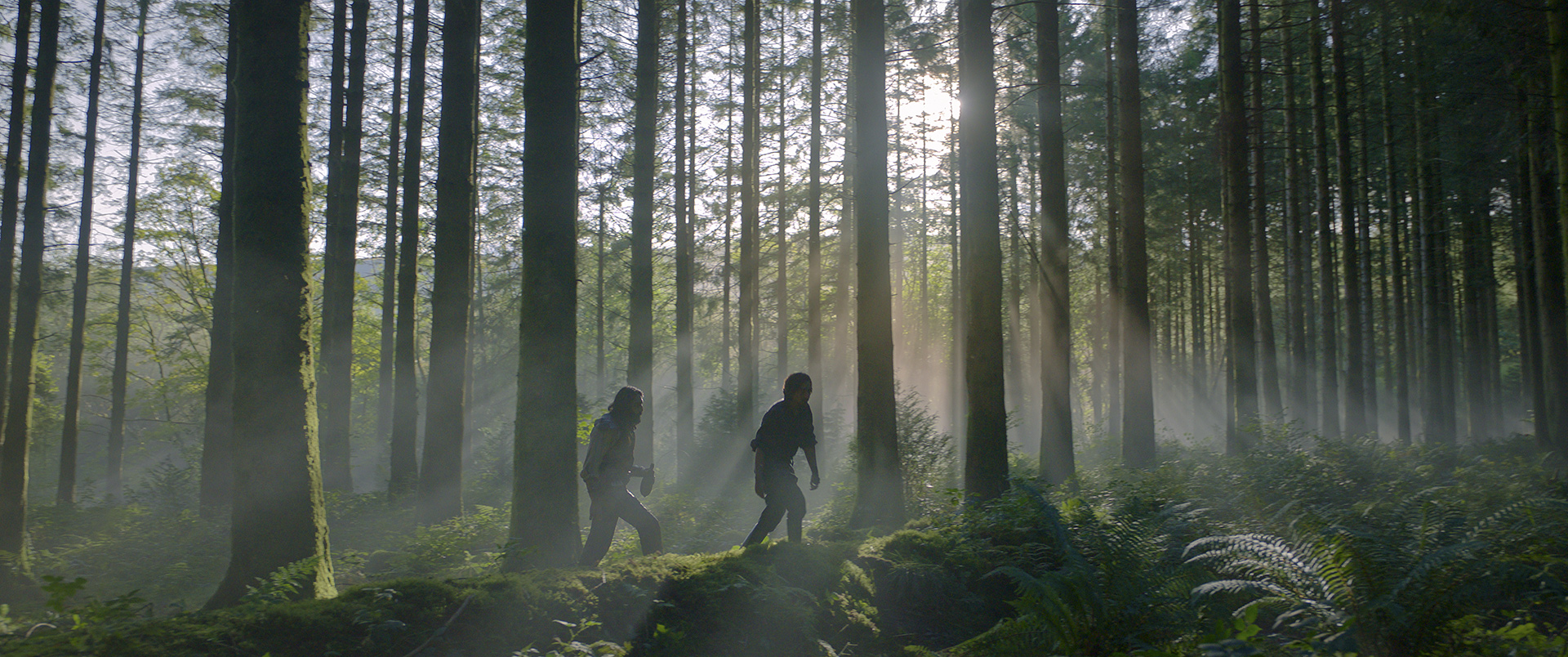
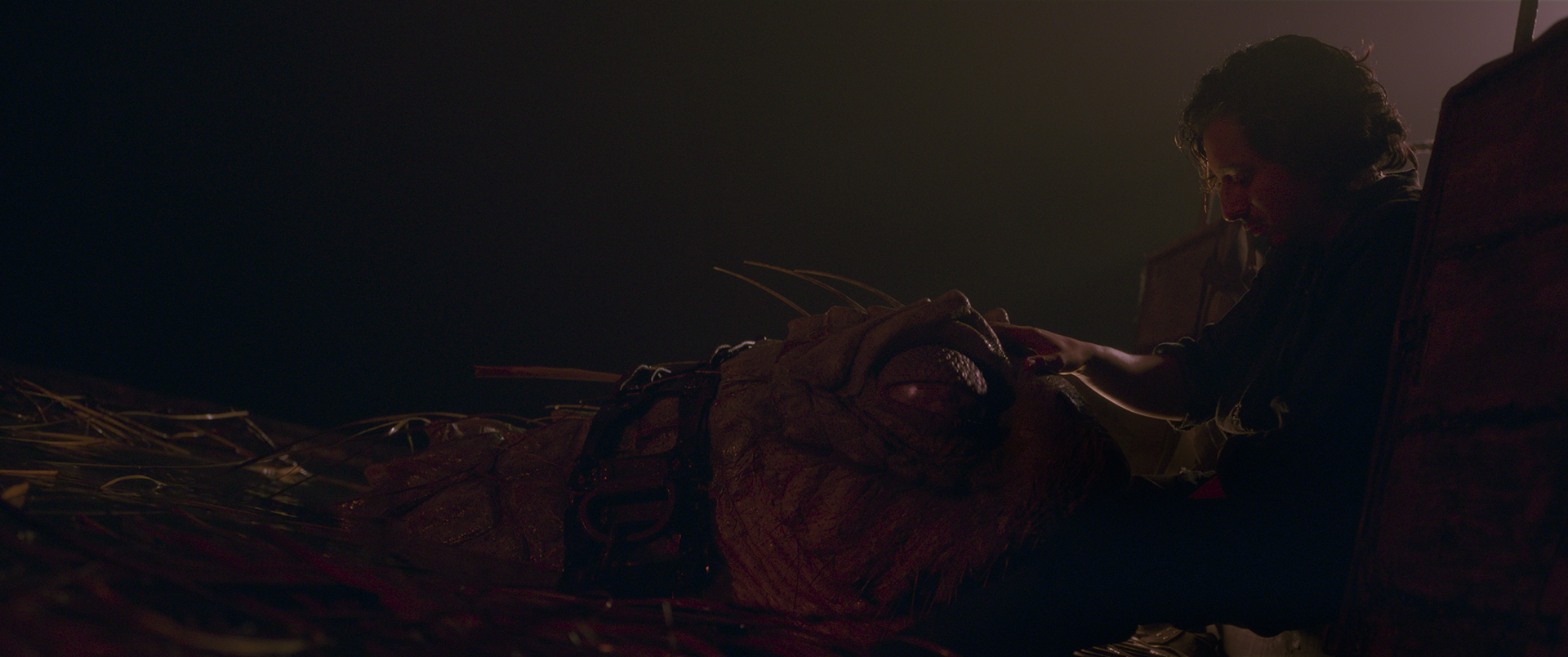
Scenes that required extensive re-recording included Jade and Boorman’s conversation atop the battlements at Nockmaar castle and the climactic battle of the Slaughtered Lamb, which included two death scenes in the midst of a torrential downpour. Collins takes heart in the small but important technical accomplishments, like in a scene with two actors having a discussion as they walk alongside their horses. Filled with the noises of footsteps, breathing animals, equipment, and the natural elements, all of the final sound must be recreated. This not only includes the dialogue itself, but the horses and the surrounding ambience. “To recreate that in a natural way and have it come together with the musical score is really satisfying,” he notes. “You see the illusion pulled off.”
Collins admires Kasdan’s use of names and references to events which add layers of detail and authenticity to the story. “In the first episode, there’s a reference to the ‘Shining Legion,’” Collins points out, “and Ballantine is described as the commanding knight of the ‘Pacalcade.’ What is the Pacalcade? It’s the coolest word. Jon is constantly throwing out all of this lore, and he likes us to do the same thing with sound, to fill this world and capture the imagination.”
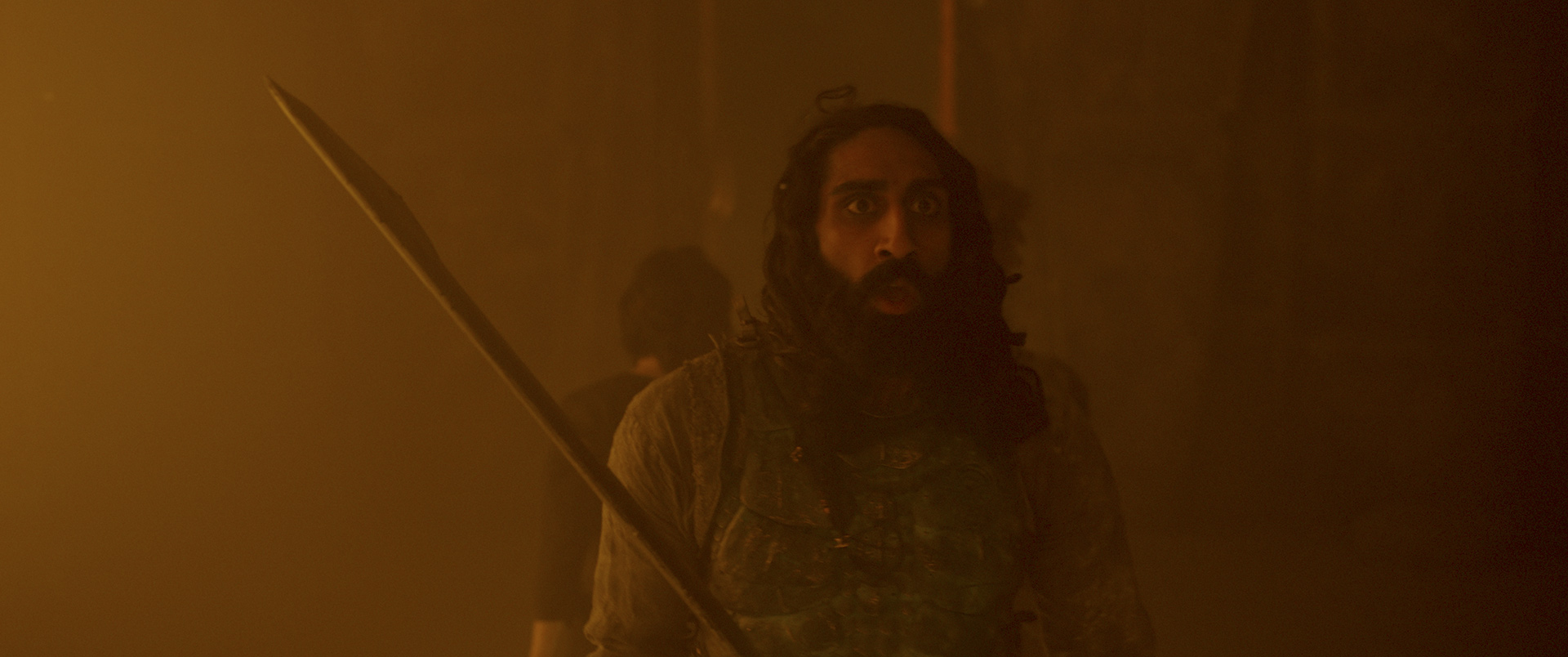
Instances of expanded or revised dialogue included Boorman’s heroic moment in the finale when he elects to hold off the Gales alone. “He has a line where he goes back in ‘buck naked and kicking ass’ — that’s how he wants to leave the world,” Collins explains. “He’s walking out of frame at the end, so we added the line, ‘All right boys, who brought butter!’ We had about 15 different alternates. It’s been said that there’s the script you write, the script you shoot, and the script you end up with in post. Jon Kasdan was constantly adding to it.”
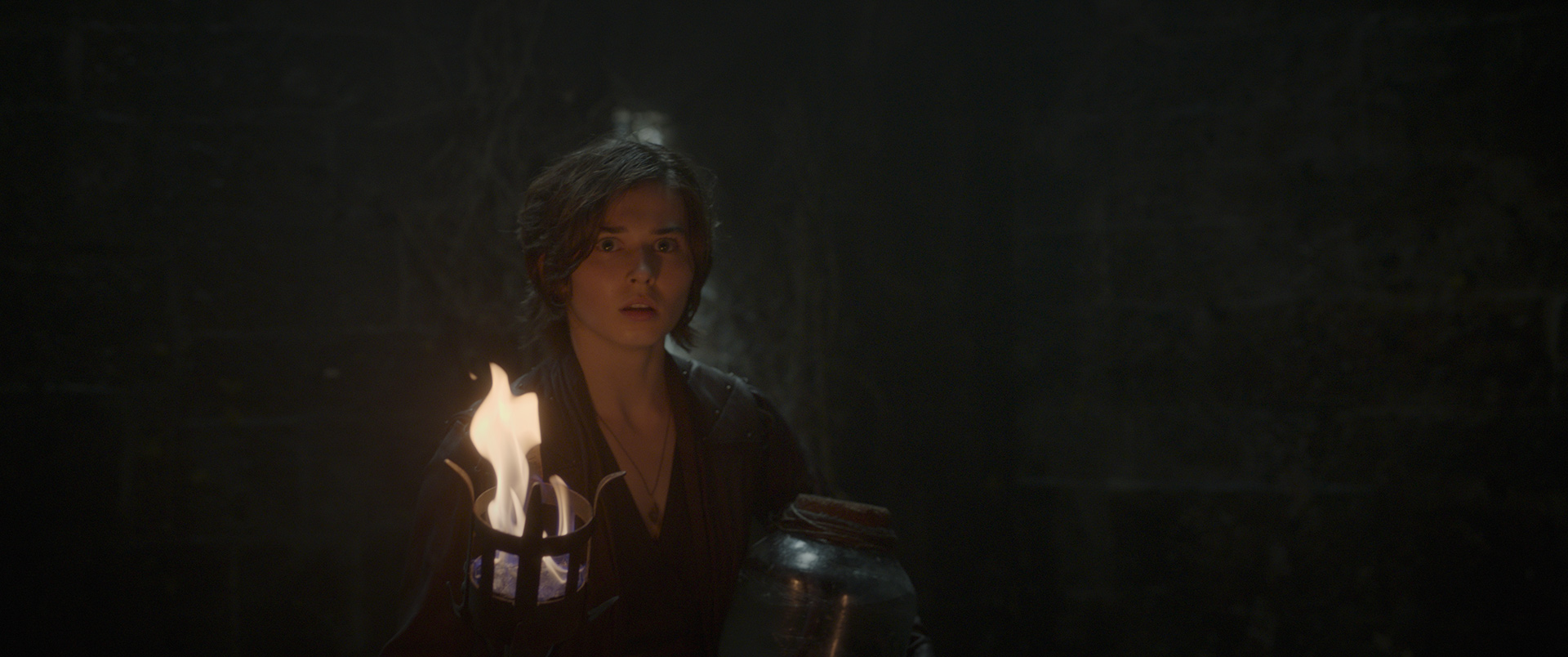
By “telling stories with sound,” as Collins puts it, the Skywalker Sound crew added layers of context to the series. “When Kit approaches the tapestry at Nockmaar, you can hear all of these acolytes, like they’re in a Greek amphitheater or the huge crowd in Star Wars: The Rise of Skywalker. There are unseen thousands of dark disciples watching this anointing of Queen Bavmorda.” Actor Ruby Cruz would perform the voice of Bavmorda, speaking for her character’s young grandmother, and adopting an English accent.
Collins made good use of Skywalker Sound’s “loop group,” an assortment of voice actors who provide background chatter and dialogue to fill scenes like the banquet at Tir Asleen or screams and yells during a battle. “During the Nelwyn sequence, they’re all shouting ‘Finger test! Finger test!’” Collins adds, “and one of them yells ‘DO IT!’ It just makes me laugh every time. That wasn’t in the script. That comes up when we’re in the recording studio. Poor Willow, he’s just not able to keep up with everyone.” (Collins himself would provide the voice of both the Lich and Kenneth the Mudmander.)
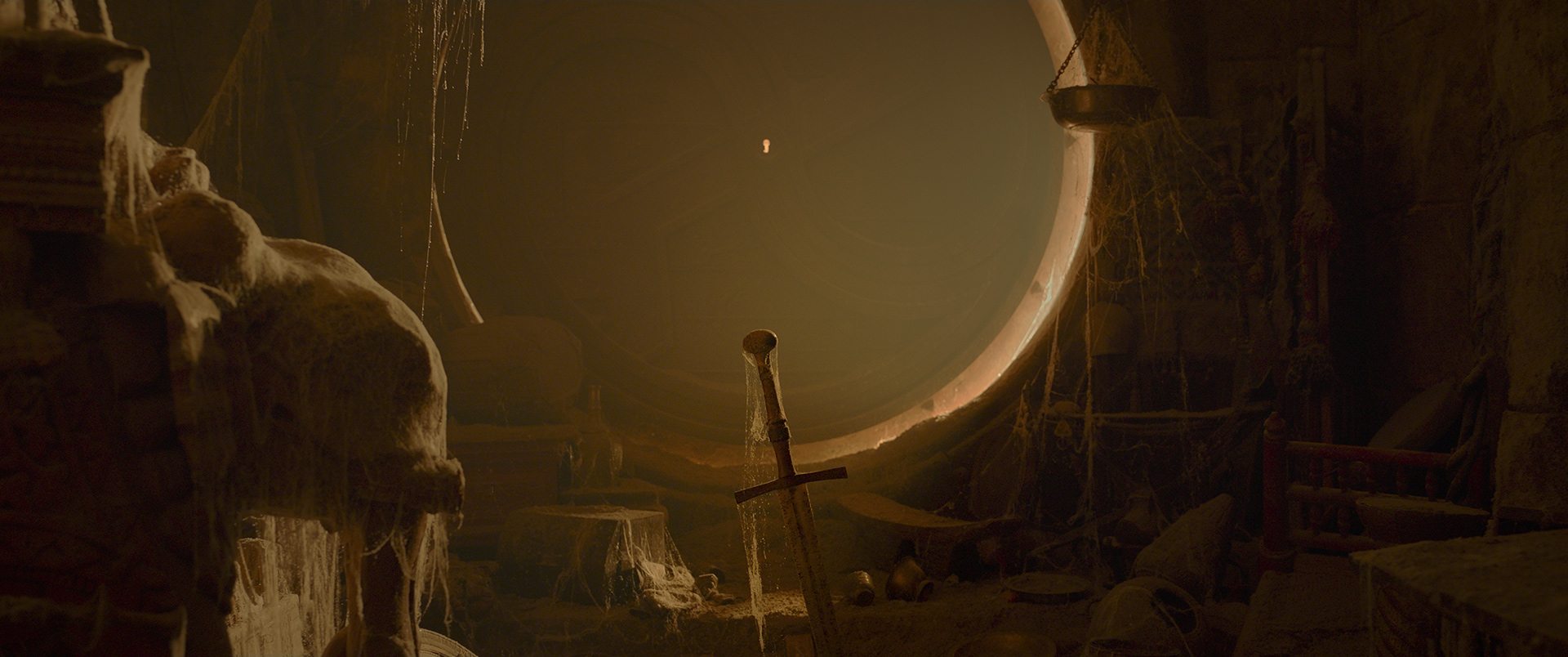
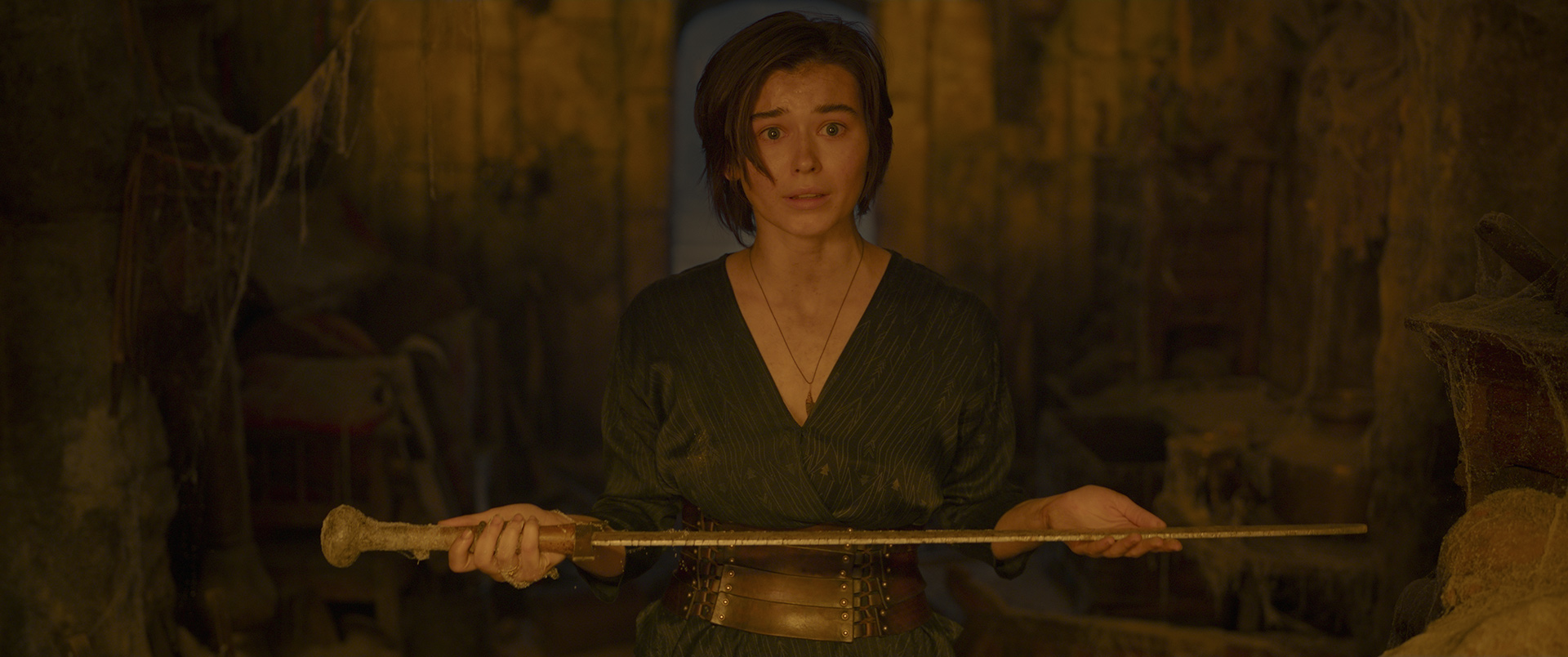
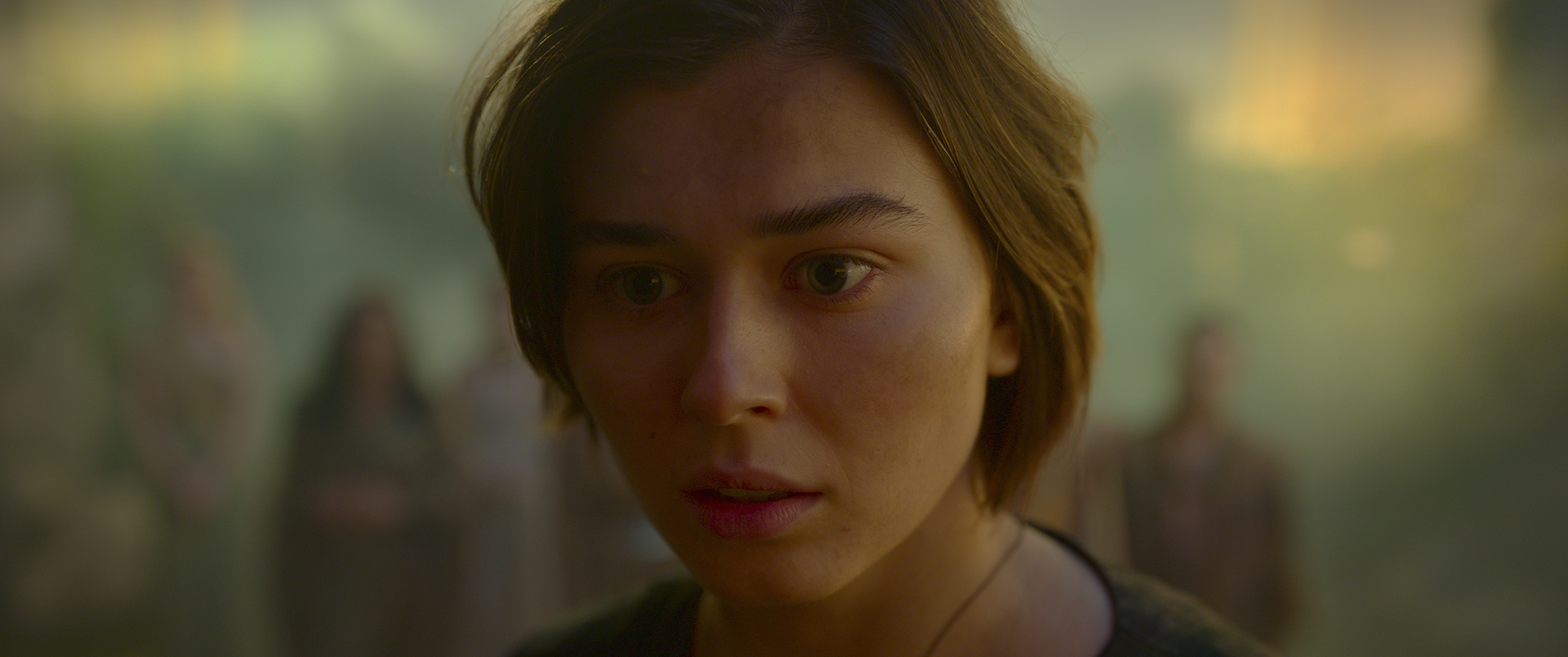
Another poignant moment of voice recording came with Jack Kilmer, son of original Madmartigan actor Val Kilmer. Having spoken for his father in the recent documentary, Val (2021), the younger Kilmer recorded Madmartigan’s brief lines which were then combined with the elder’s own voice and his personalized AI software. “Jack was great and tried them in lots of different ways,” Collins says. “It’s kind of an echo of Madmartigan. He’s off in this different place. We did some treatment to his voice, but not much. It’s really Jack’s performance.”
The overall experience of working on the series was both enriching and intensive, with eight hour-length episodes to cover. Following the precedent of the original movie, Collins and the team had to strike a balance between resurrecting classic sounds and making new ones. “The reason I got into this field is because I loved [original sound designer] Ben Burtt’s work,” Collins says. “He’s my hero, and in a way, my whole career has been a Ben Burtt homage!” Digging through the original recordings, Collins even found tracks for the baby Elora Danan that, according to their labels, were voiced by Burtt’s own son, Benny, who himself is now a Skywalker Sound employee.
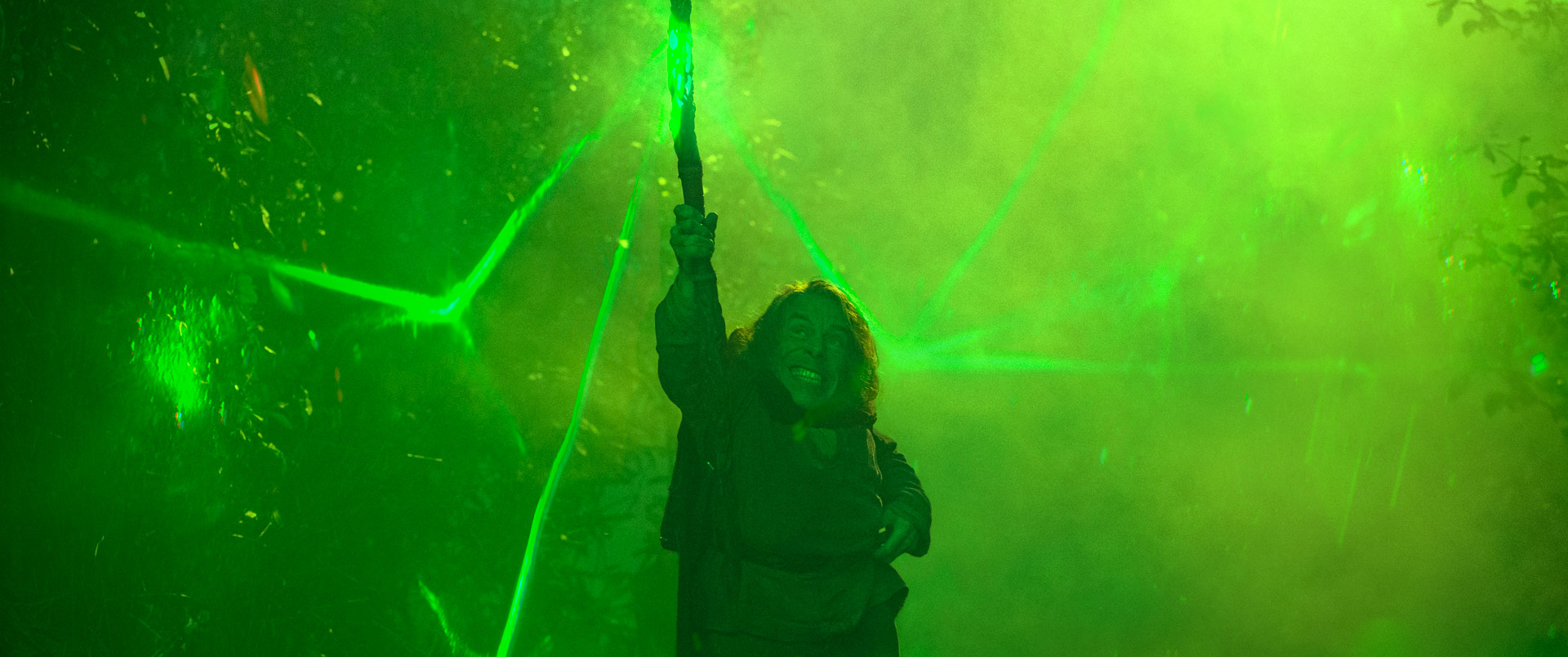
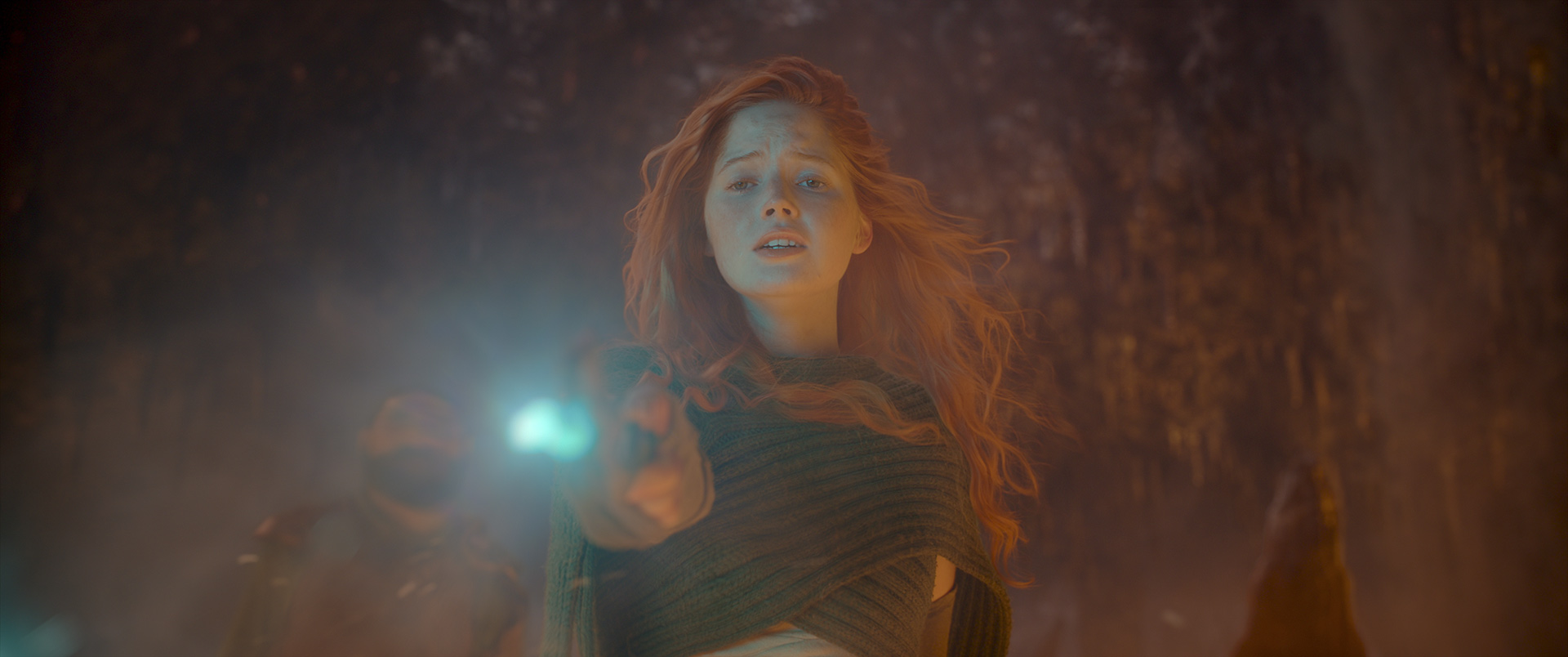
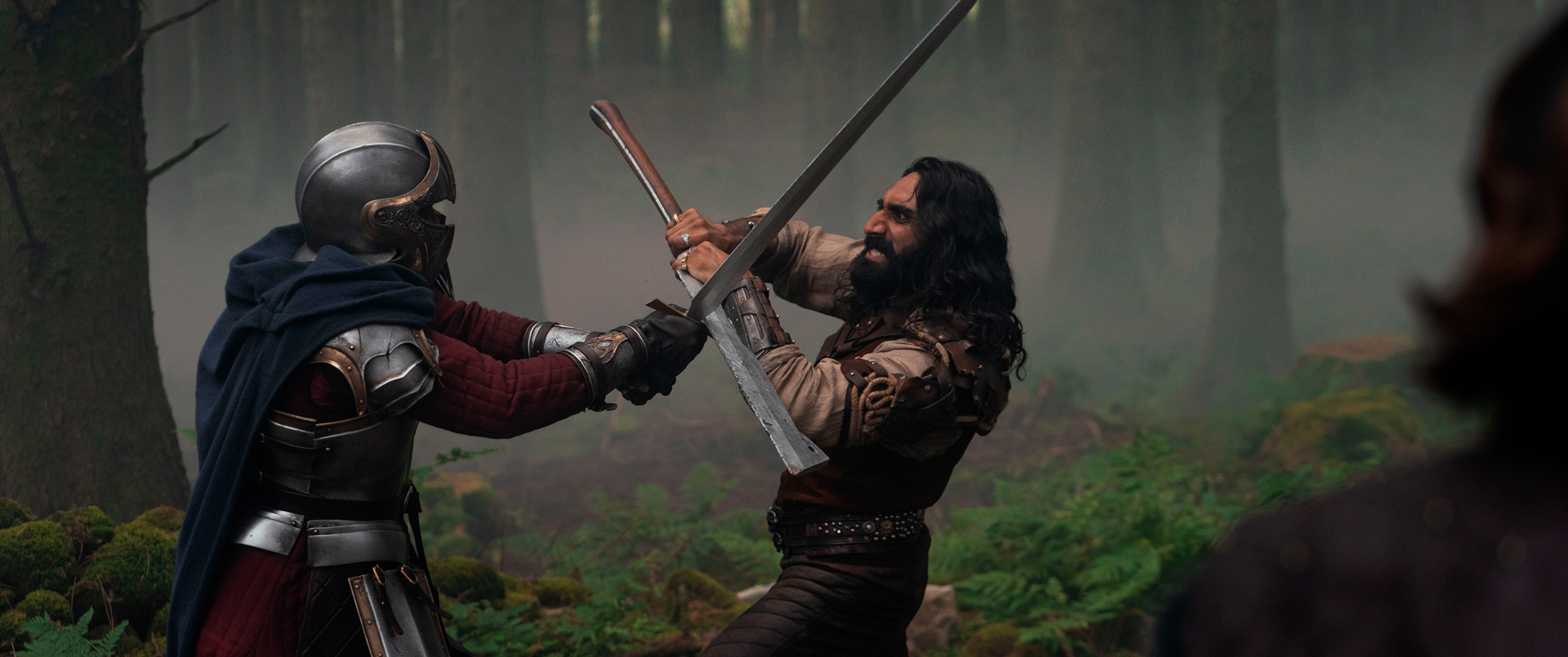
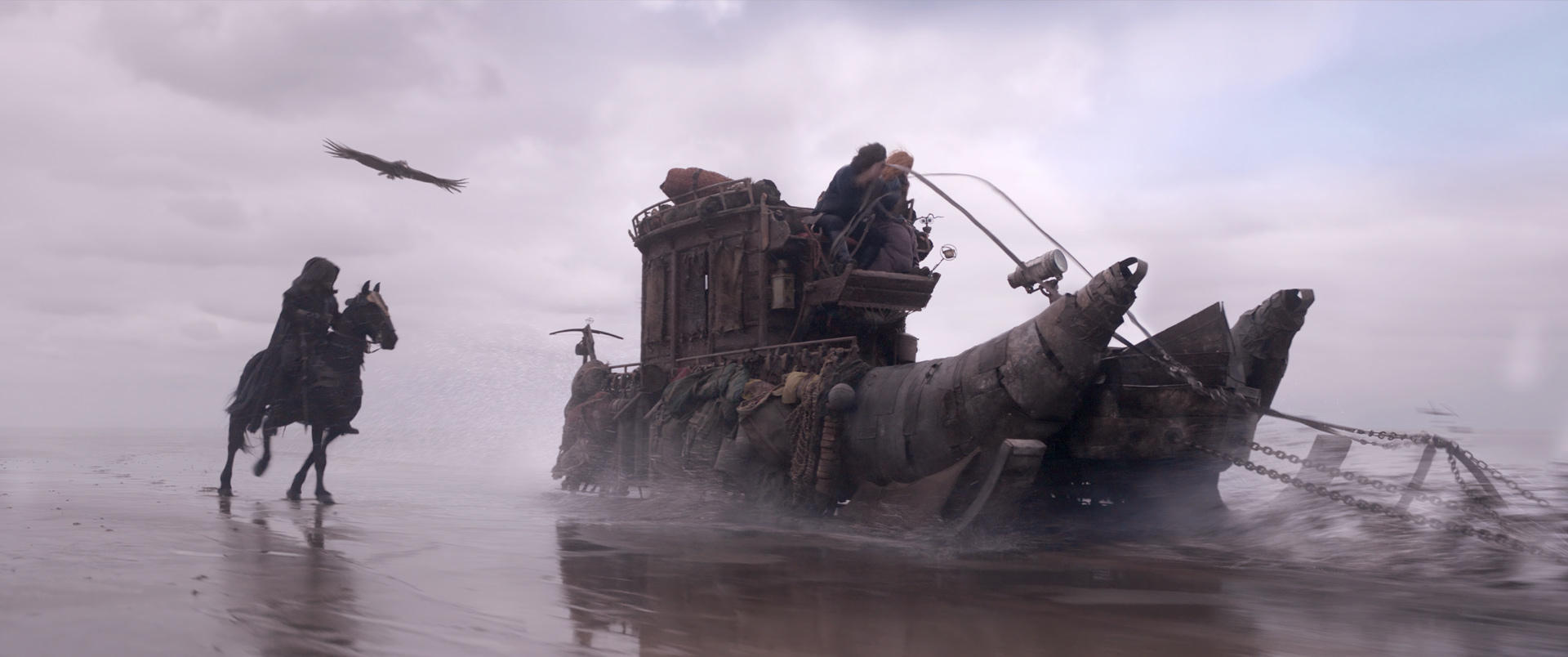
“Willow has its own language like Star Wars,” Collins adds, “and as we do with a new project like Star Wars: The Clone Wars or Rogue One: A Star Wars Story, you’re taking older material and making variations to give it that same feel. Like what Industrial Light & Magic is doing with the visuals, or James Newton Howard is doing with James Horner’s original score, we’re trying to do with the sound.”
Together, Collins and Farmer discussed how Willow would be different from other fantasy soundscapes. “The magic sounds were David’s biggest focus, but he was also very particular about things like thunder and lightning,” Collins says. “He didn’t want it to be the standard sounds. It was very specialized.”
They also discussed opportunities to exaggerate and caricature the sound, including for Boorman’s massive cleaver. “Even when he just puts it on his shoulder, it makes a huge sound,” Collins notes. “It seems ridiculous when you first talk about it, but it works.” Similarly, the running and stomping of the Scourge “are almost like mini-explosions cut into footsteps,” as he puts it. “It’s similar to Indiana Jones, who has a pistol that sounds like a howitzer cannon! If it makes an impact, then it’s working, and it doesn’t matter what it is.”
Throughout the process, Collins and team worked closely with Kasdan as well as producers Tommy Harper and Hameed Shaukat. “Working with Jon has been one of the most collaborative processes I’ve ever had,” Collins says. “We can speak a similar language using references to the original or other movies. We would do spotting sessions with the early cuts of the episodes. Jon would give specific notes and we’d ask lots of questions.”
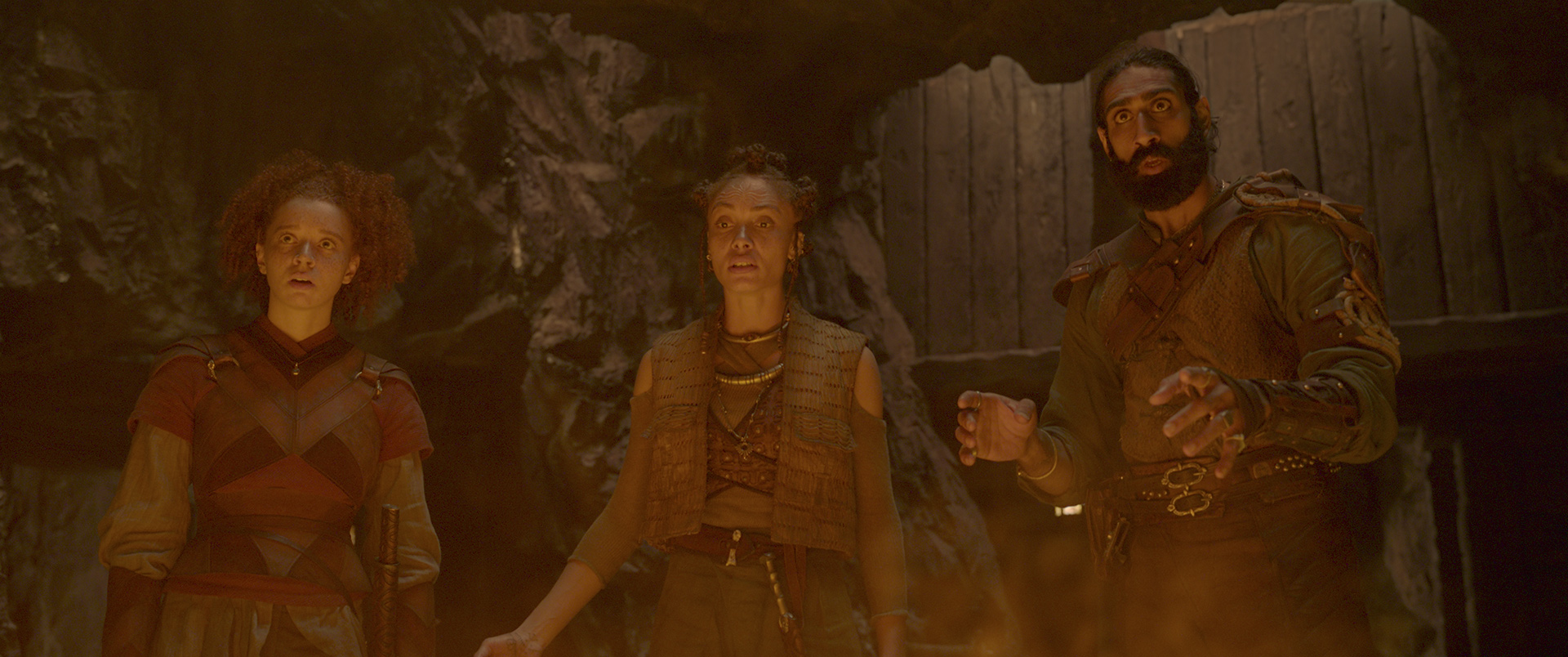
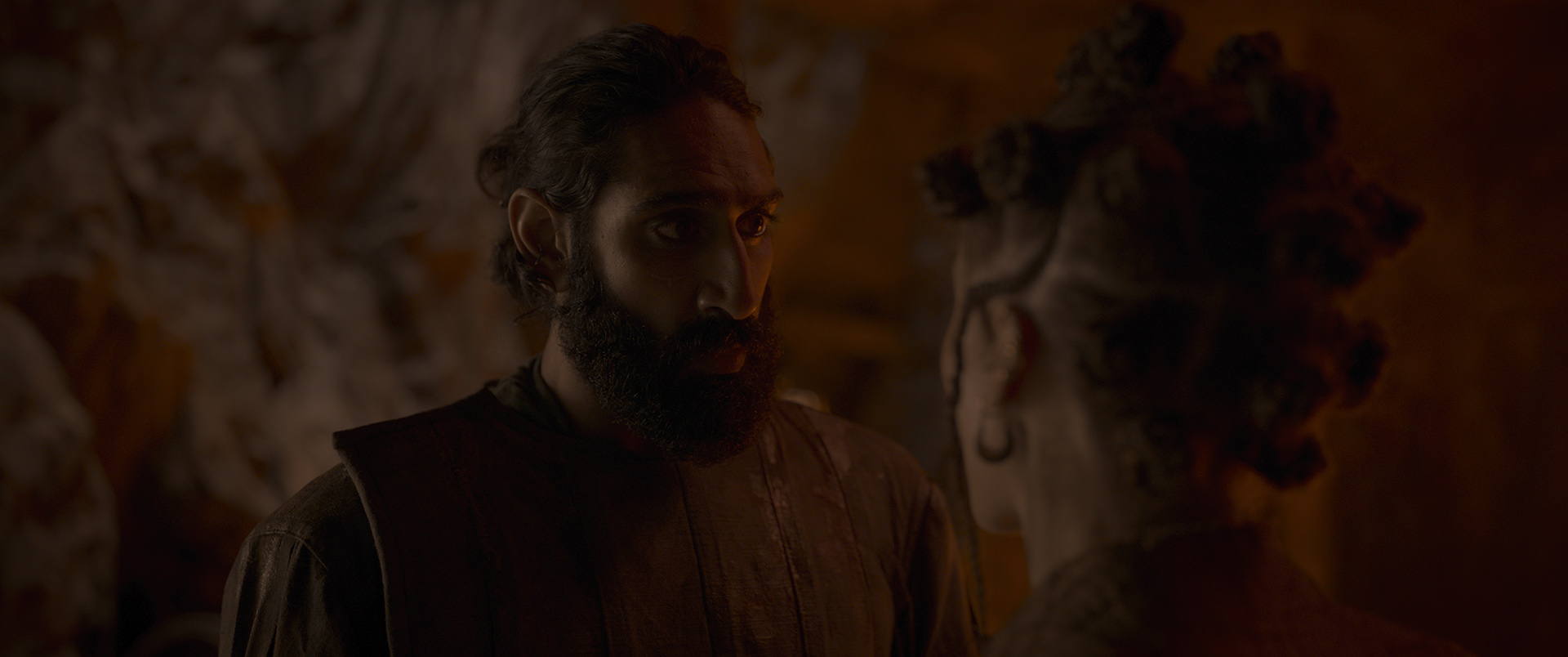
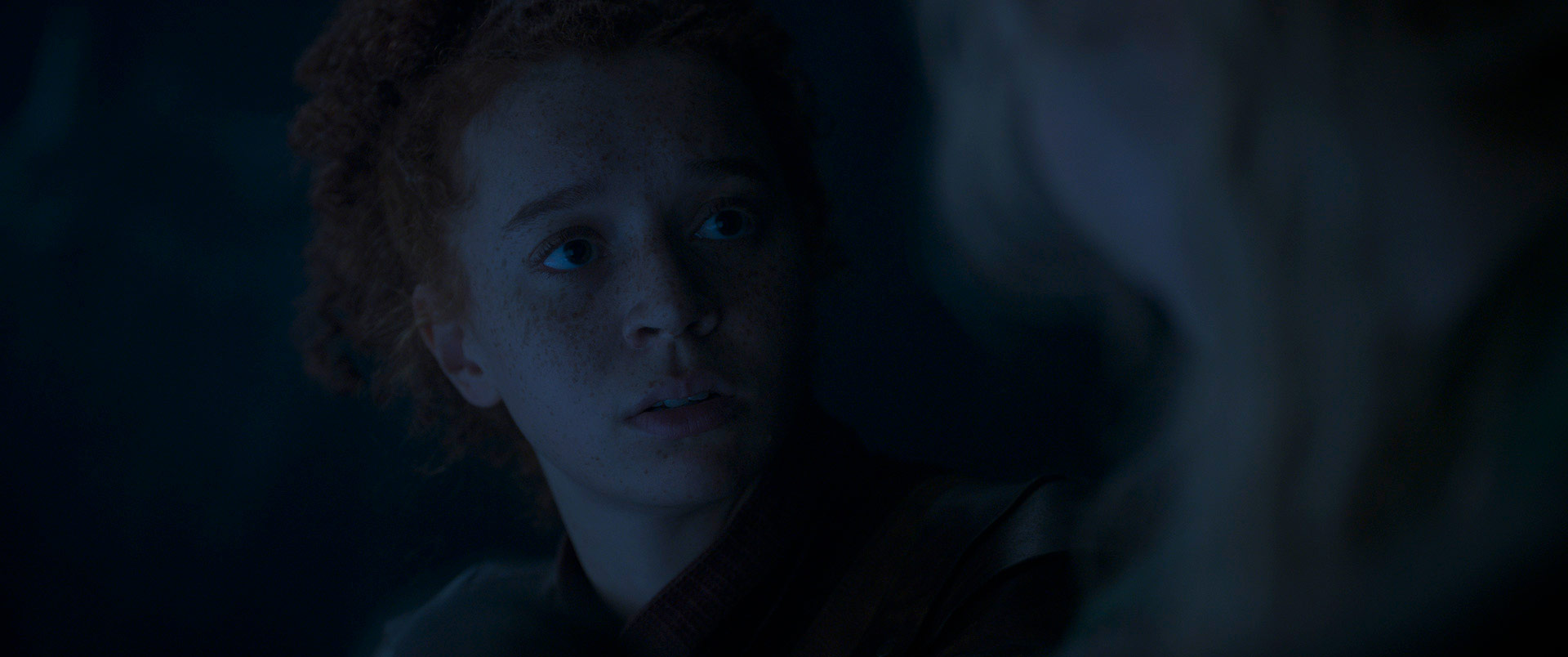
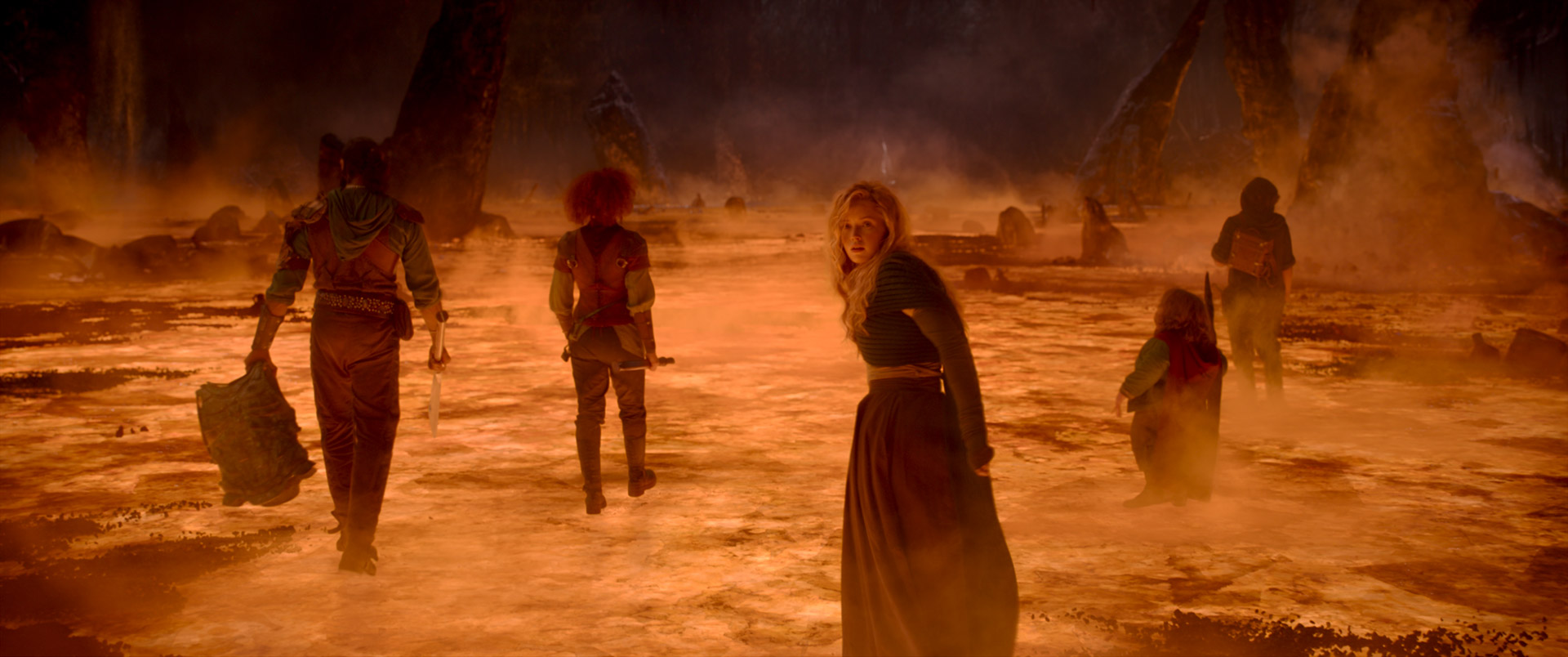
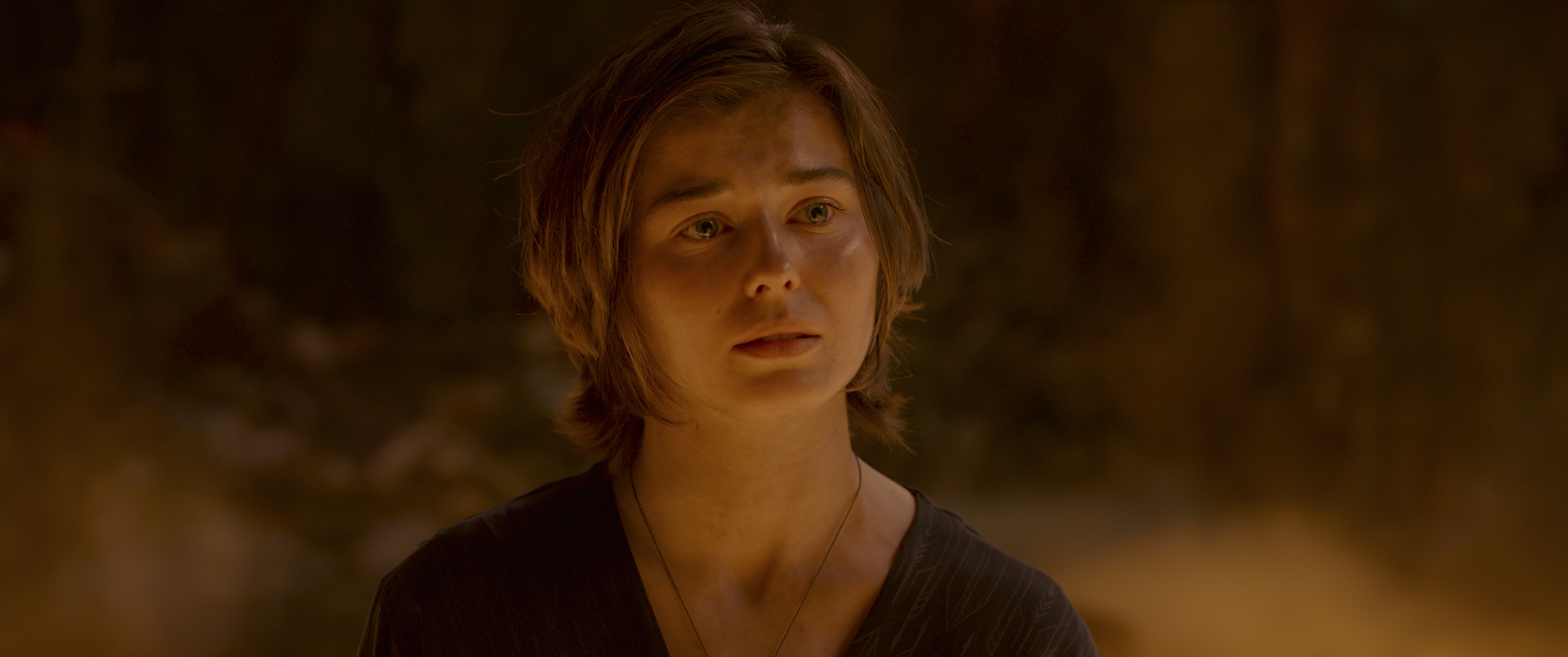
During the episode “Prisoners of Skellin,” Boorman, Jade, and Elora make their way along a precipice. Kasdan asked if they could take the dialogue heard later in the episode’s final scene and place it there as if it were an echo of things to come. “We were playing with time dilation,” Collins notes. “You hear this faint call of what Kit yells at Elora before she goes into the vermiscus lake (we called it the crème-brûlée lake). We tried it, and it was awesome.”
The Skellin episode as a whole was a standout for Collins for being especially sound-intensive. “You’re trying to convey that all of these people have been enslaved,” he says. “They’re not onscreen very long but you can hear them. You’re also trying convey that there’s this vermiscus goo, and the time dilation, and then there’s Wiggleheim’s tomb and the Kymerian Cuirass deep below. There is a lot of work happening to tell you what’s going on, and it’s not visible onscreen. The proudest thing for me as a supervising sound editor is telling stories with sound that aren’t actually onscreen.”
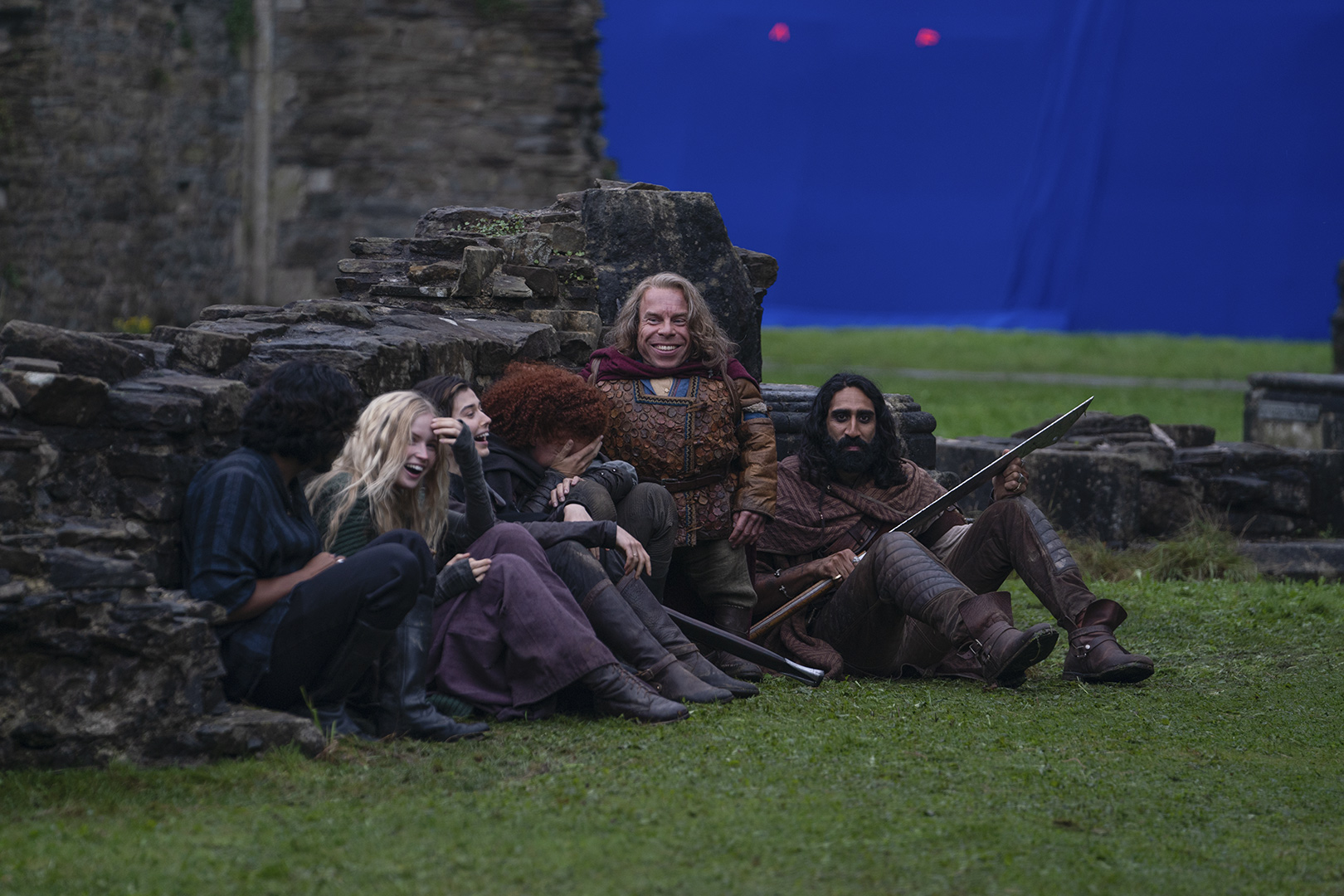
Contributing to the new Willow series came full circle for those like Collins who’d always loved the original, but it’s also a fitting moment for Skywalker Sound as a whole. When the division moved into its current home at Skywalker Ranch’s Technical Building in 1987, the Willow movie was one of the first to be sound-mixed onsite. Some 35 years later, mixers Stephen Urata and Roy Waldspurger brought this magical realm back to the stage as another among the hundreds of projects that have since passed through the facility.
“My favorite part of this job is being at the end of the line,” Collins adds. “Thousands of people work on a series like this, and we’re the first people to see it come together. It’s like providing the icing for a very elaborate cake that’s been worked on for a long time. You see the delight that the directors and producers have to finish it. I live for that.”
—
Lucas O. Seastrom is a writer and historian at Lucasfilm.

